Australia – that far away* is an exotic, fascinating place, with a rich history, amazing landscapes, and no-nonsense Aussies with their dry wit and endearing charm. Yes, the Land Down Under has a lot to offer, and it has contributed greatly to music, the arts, acting, culture, entertainment, and even to the world of food and drink.
If all that wasn’t enough, it now seems that they’ve given us a wonderful little dog; the Toy Australian Shepherd…
Except that it’s not from Australia!
So, why is it called the Aussie Shepherd?
We’d better back up a bit and explain.
*Of course, it’s not far away if you’re actually there, so if you’re reading this in Australia, then g’day and good on yer!
What Is A Toy Australian Shepherd?
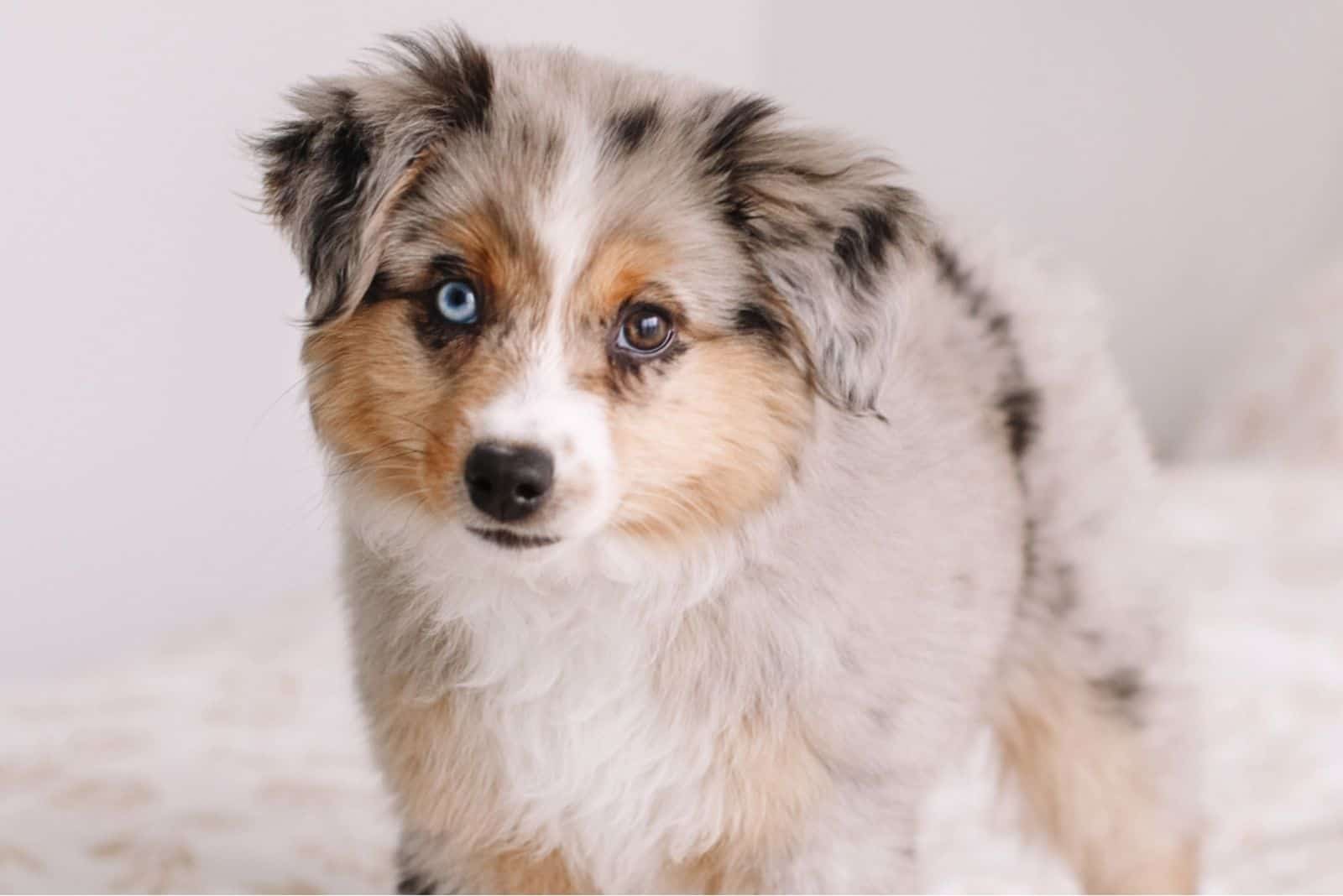
Basically, it’s a smaller version of the Standard Aussie Shepherd dog. But, how did it come to have such a misleading name?
The story begins in 19th century California, where millions of sheep were kept on vast farms or ranches. Farmers needed reliable herding dogs to control these vast flocks, so they set about breeding suitable sheepdogs from the various dog breeds available at the time.
This included Collies that were imported from New Zealand and Australia, which is where the name came from, even though the final breed, the standard Australian Shepherd, was not Australian in the least.
To add to the confusion, the shepherds who brought dogs with them to the USA mostly came from the Basque and Pyrenees regions of France and Spain via Australia!
Geographical complications aside, the standard version of this beautiful dog measures between 18 and 23 inches at the shoulder, with males being taller. They weigh between 40 and 65 pounds, and males are once again the bigger of the two.
Aussie Shepherds are fairly affectionate dogs that are very good-natured with young children and love to frolic and play with them. However, as they have herding dog instincts, there’s a chance that they’ll get over-enthusiastic and bump the children to get them in line, just as they would a straying sheep.
They are high-energy dogs that need a minimum of two hours of exercise each day. They’re also super-smart, so mental stimulation is essential to keep them happy. It’s vital that you keep them active and occupied or they could become destructive.
Swimming, running, playing fetch, agility training, obstacle courses, herding competitions – all of these are excellent ways to keep an Aussie Shepherd busy.
On a slightly negative note, these dogs are prone to separation anxiety if left for long periods, and can become destructive and badly behaved. They also have a high prey drive and will chase after small animals unless they are properly trained and socialized.
To add to the confusion surrounding the breed’s name, they have also been called the Spanish Shepherd, the New Mexican Shepherd, and the California Shepherd.
Anyway, back to the Toy Australian Shepherd!
We know it’s essentially a smaller version of the standard-sized dog, but there’s also a mini version. So, how is this any different? Let’s take a look and see if we can make things a bit clearer…
Miniature Australian Shepherd Vs. Standard
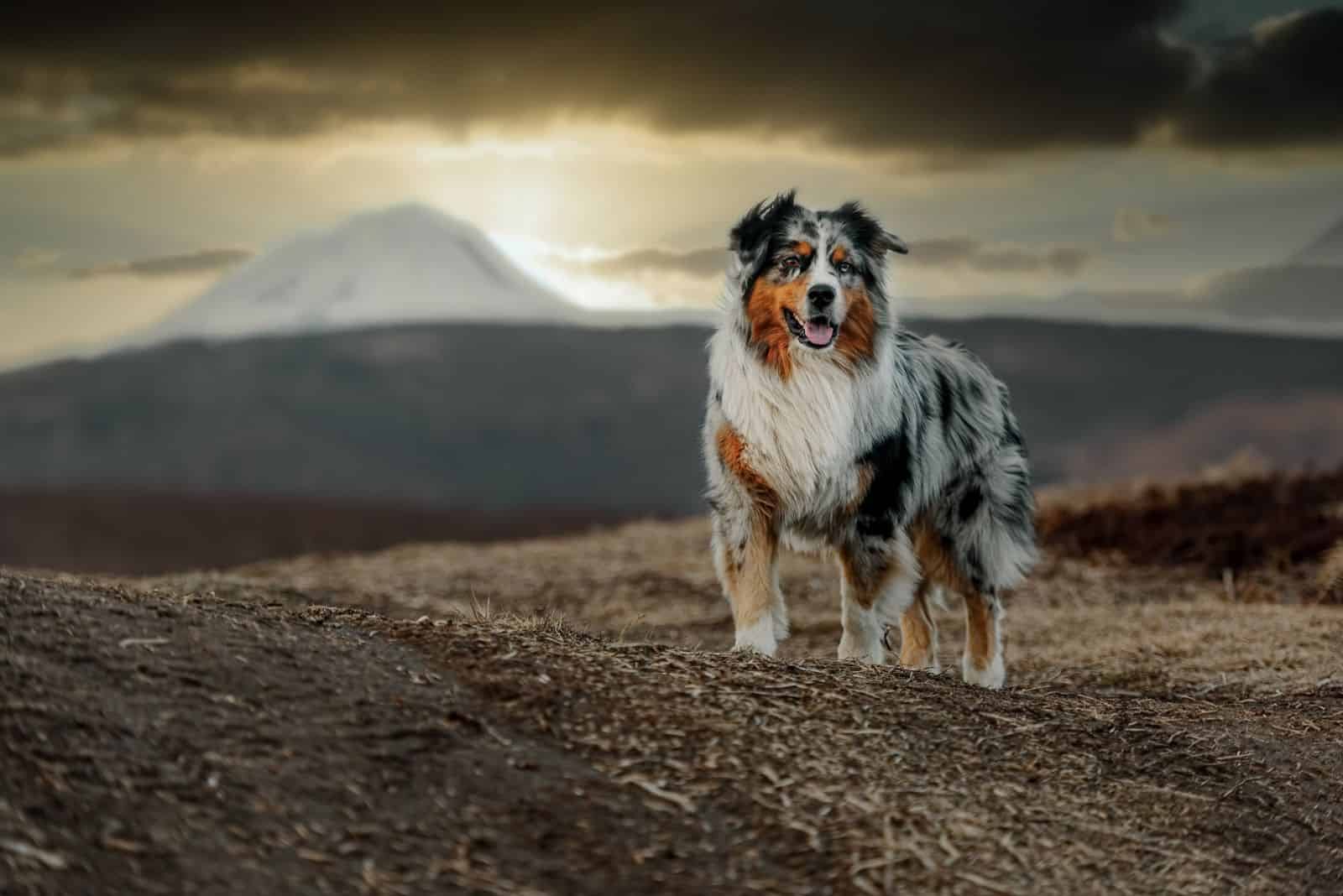
There are three different official sizes of Aussie Shepherds – standard, miniature, and toy.
In this section, we’re looking for any differences between the standard and the mini version.
Obviously, the Miniature Australian Shepherd is smaller, weighing between 20 and 40 pounds, and measuring between 13 and 18 inches.
Aside from this, they are pretty much the same.
They were first produced in the late 1960s when the people who ran the rodeo circuit in America wanted a smaller dog but with the same intelligence, character, and working-dog capabilities as the Standard Aussie Shepherd.
How did they make them so small?
There are several ways to do this, including the use of runts, or taking the smallest dogs and selectively breeding them until you end up with a smaller version. You can also cross the standard version with a smaller breed entirely.
It takes time and effort, but thanks to a so-called ‘slippery genome’, dogs tend to adapt and mutate relatively quickly.
However, inexperienced or unethical breeders produce ever smaller dogs to meet the current demand for teacup dogs or micro-pups. They will sometimes use inbreeding or even deliberately withhold nourishment from pups to stunt their growth. Needless to say, this is unacceptable and cruel.
A Teacup Aussie is not a separate breed; it is simply a very small version of the standard-sized dog. To qualify as a teacup dog, they have to weigh less than 5 pounds.
They are incredibly cute, but the health risks are enormous, and most animal welfare organizations, veterinarians, and kennel clubs advise against buying them.
One interesting fact about the Mini Aussie is that it has caused some controversy. To be more accurate, it’s not the breed itself, but humans who have done this. Some time ago, enthusiasts of the Miniature Australian Shepherd wanted them to be registered as a separate breed. They tried to use the name, North American Shepherd, but this never caught on.
More recently, the Miniature Australian Club of the United States of America (MASCUSA) petitioned the American Kennel Club (AKC) to have the Mini Aussie listed as a breed in its own right.
The AKC agreed, but insisted that they had to have a different name and that no references or connections be made between these dogs and the Australian Shepherd!
They are now listed as the Miniature American Shepherd, and you’ll find people who insist that they are not miniature Australian Shepherds despite the fact that they are identical in every way.
The only difference lies in a piece of paper bearing the breed name and pedigree.
Mini Vs. Toy Australian Shepherd

Photo from: @mr.wilson_toyaussie
So, the Mini Aussie is smaller than the standard, and the Toy Australian Shepherd is smaller than the mini.
Makes sense? Great!
To qualify as toy dogs, they must weigh less than 15 pounds, although they generally weigh much less than this. We’ll come to the Toy Aussie’s weight later, but there’s another important difference between these two.
Mini Australian Shepherds can still be used as working dogs, but Toy Aussie Shepherds are purely bred as companion dogs. This is mostly due to the fact that they are so tiny, and therefore, more at risk of injury, even though they still have all the same working dog instincts as their larger counterparts.
This means that they need to be active and engaged in something that stimulates them mentally, just as much as the standard and miniature dogs need to be.
Aside from this, they are very much the same.
One of the things that makes this breed so appealing is its beautiful multicolored coat. Officially, these are red merle, blue merle, black tricolor, and red tricolor, although you can also find solid black, black and tan, and black and white. Most will have white markings on the chest, head, and legs.
See also: Is The Toy Aussiedoodle A Real Dog Breed?
Blue Merle Toy Australian Shepherd
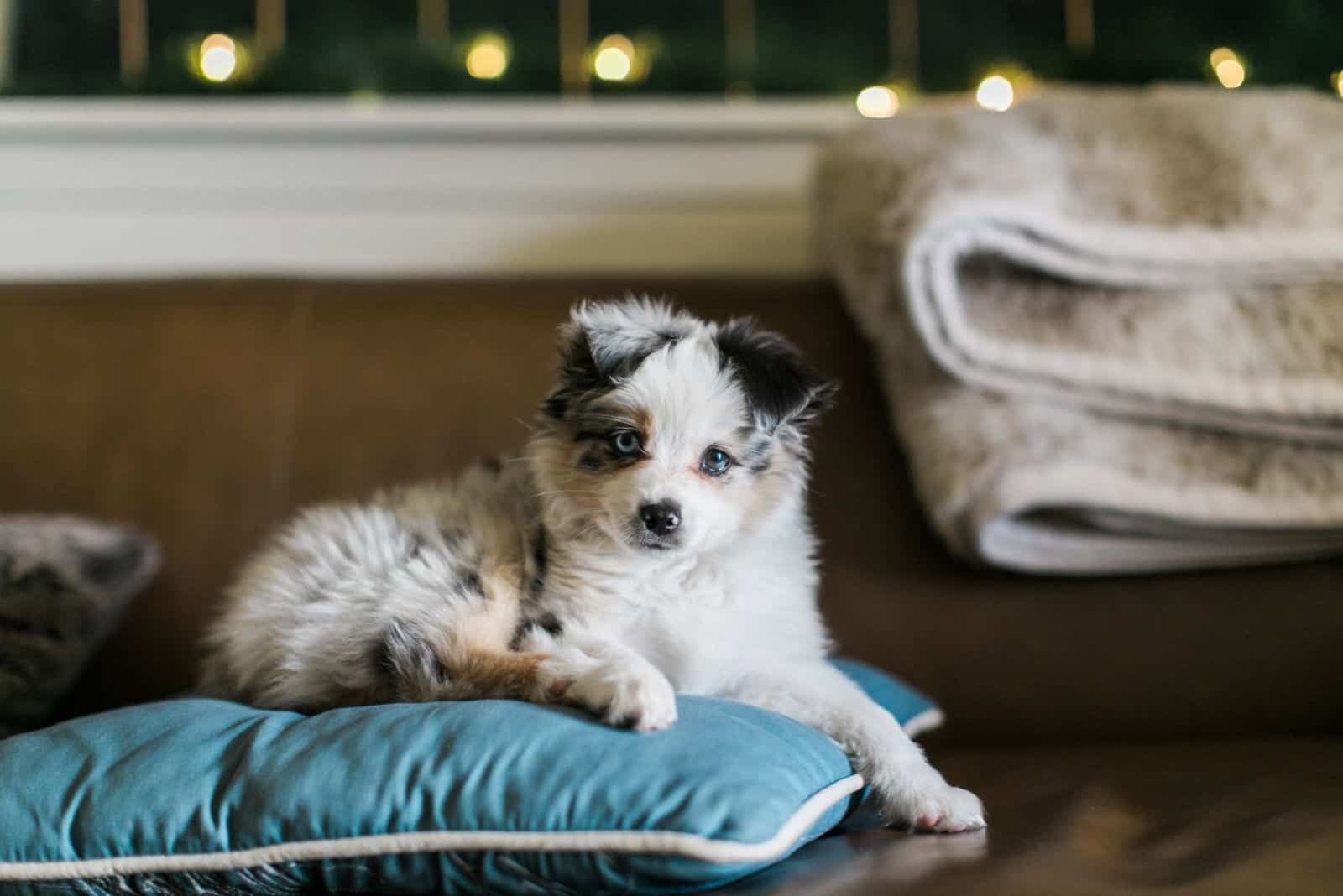
As you may know, merle is a pattern rather than a color, and it is mostly seen as darker spots on a lighter background. Also, blue dogs are never actually blue! This is a diluted form of black that appears as shades of blue/gray.
Some blue merle Toy Aussies are tricolor, with a base of blue merle, and with copper and white markings on the face, chest, legs, and belly. It’s a stunning combination, especially when set against their light-colored eyes.
You can also find these dogs with blue merle and tan coats, and even solid blue merle! The latter is very rare, so you’ll be lucky to get one of these beauties.
Toy Australian Shepherd: Red Merle
There are three types of red merle Toy Aussie: tri-color, red merle and white, and solid red merle. All of them are pretty rare and equally as beautiful, with red or liver-colored noses.
The red color in a dog’s coat is produced by the pigment called pheomelanin. This is influenced by different genes that either dilute or strengthen the color within certain cells, providing the wonderful range of shades we see in all dogs.
The merle gene also affects eye color, which is why Australian Shepherds often have pale blue or amber eyes, and sometimes one of each!
See Also: Blue Eyed Dogs: 36 Enchanting Dog Breeds With Cerulean Eyes
Red Tri Toy Australian Shepherd
Red Toy Aussies with the merle pattern are also rare, with solid red being the rarest. These dogs will have amber-colored eyes in varying shades.
The red tricolor has a red base coat, white markings, and copper highlights around the legs and face. These are similar to the red-bi, which is usually missing the copper markings, although these might be so faint that you may not notice them.
Toy Australian Shepherd: Black Tri

Once again, there are several types of black Toy Aussie Shepherds: solid black, black and tan, black-bi, and black tricolor.
Black tricolor is very popular, with a mostly black coat, white markings on the face, chest, belly, and legs, and tan/copper markings on the face and legs.
Black and tan dogs can also have white marks on the bottom of their legs and around their nose. Strangely enough, they aren’t considered tri-color, even though they have three colors on their coats!
Likewise, a solid black dog will often have a splash of white on its chest, but it isn’t classed as a bicolor dog.
Toy Australian Shepherd Size
It’s just like the standard Aussie Shepherd, but in a smaller package, measuring between 10 and 14 inches at the shoulder. As for their weight, you should expect Toy Aussie puppies to weigh between 12 and 17 pounds.
It’s not an exact science, and the more observant reader will have noted that a Toy Aussie might conceivably be bigger than a mini version, especially if they were a little on the chubby side!
Toy Australian Shepherd Full Grown
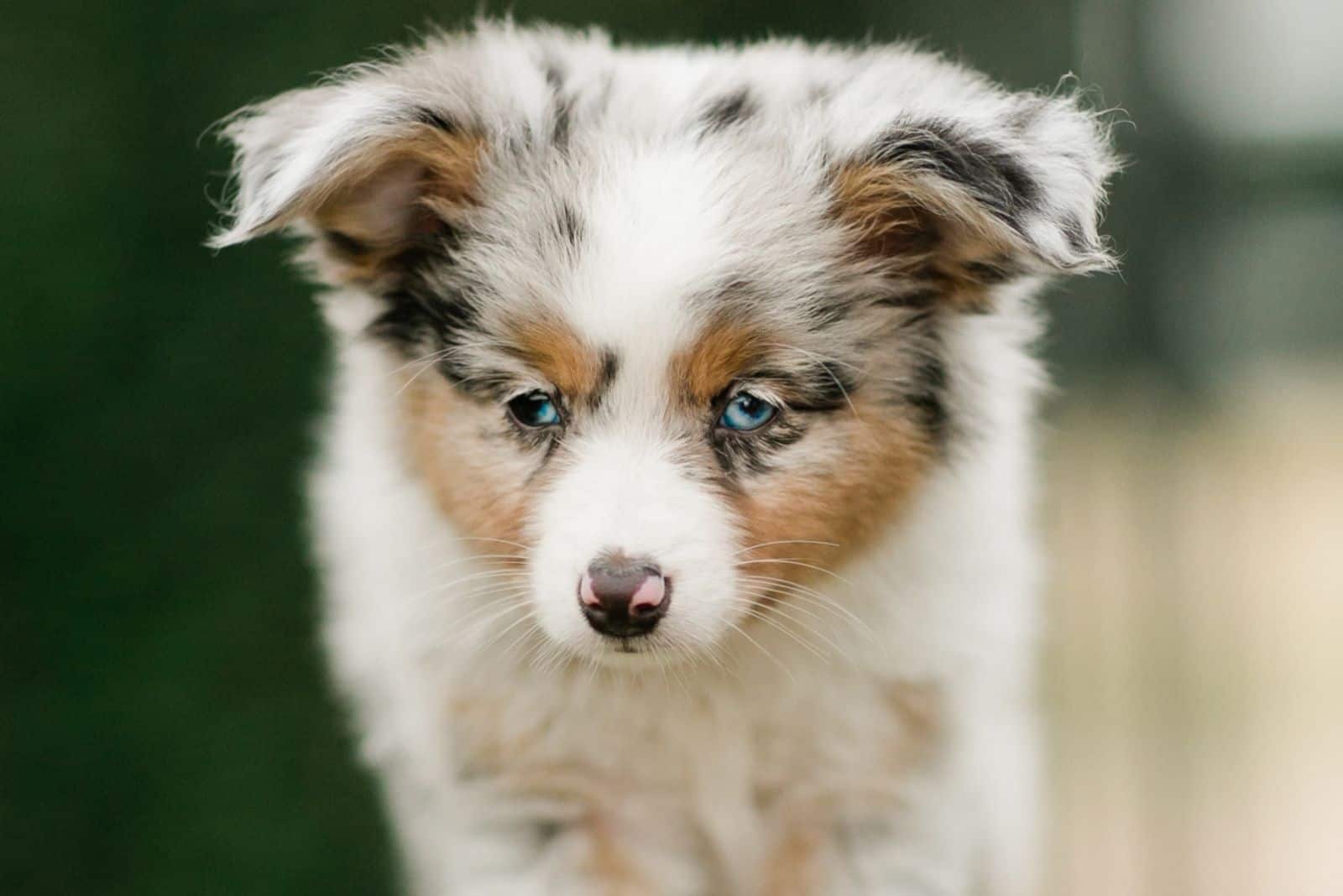
Didn’t we just cover this in the last section?
Well, yes, but it’s important to be aware that a Toy Australian Shepherd won’t usually get any taller than 14 inches.
As we already said, Mini Aussies can be as small as 13 inches at the shoulder, technically qualifying them for the toy dog category.
Some breeders sell pups to unsuspecting dog lovers as toy breeds, but as the dog starts to develop and grow, it becomes clear that it is a miniature or even a standard type.
These unscrupulous breeders play on the demand for small dogs, using it as a marketing ploy. This is especially the case with pups sold online, and it’s always best to avoid these sellers.
They rarely respond to any inquiries about the pups or the parents, and make bold, unlikely claims about their client list (usually including celebrities or royal families from various countries).
Toy Australian Shepherd Temperament
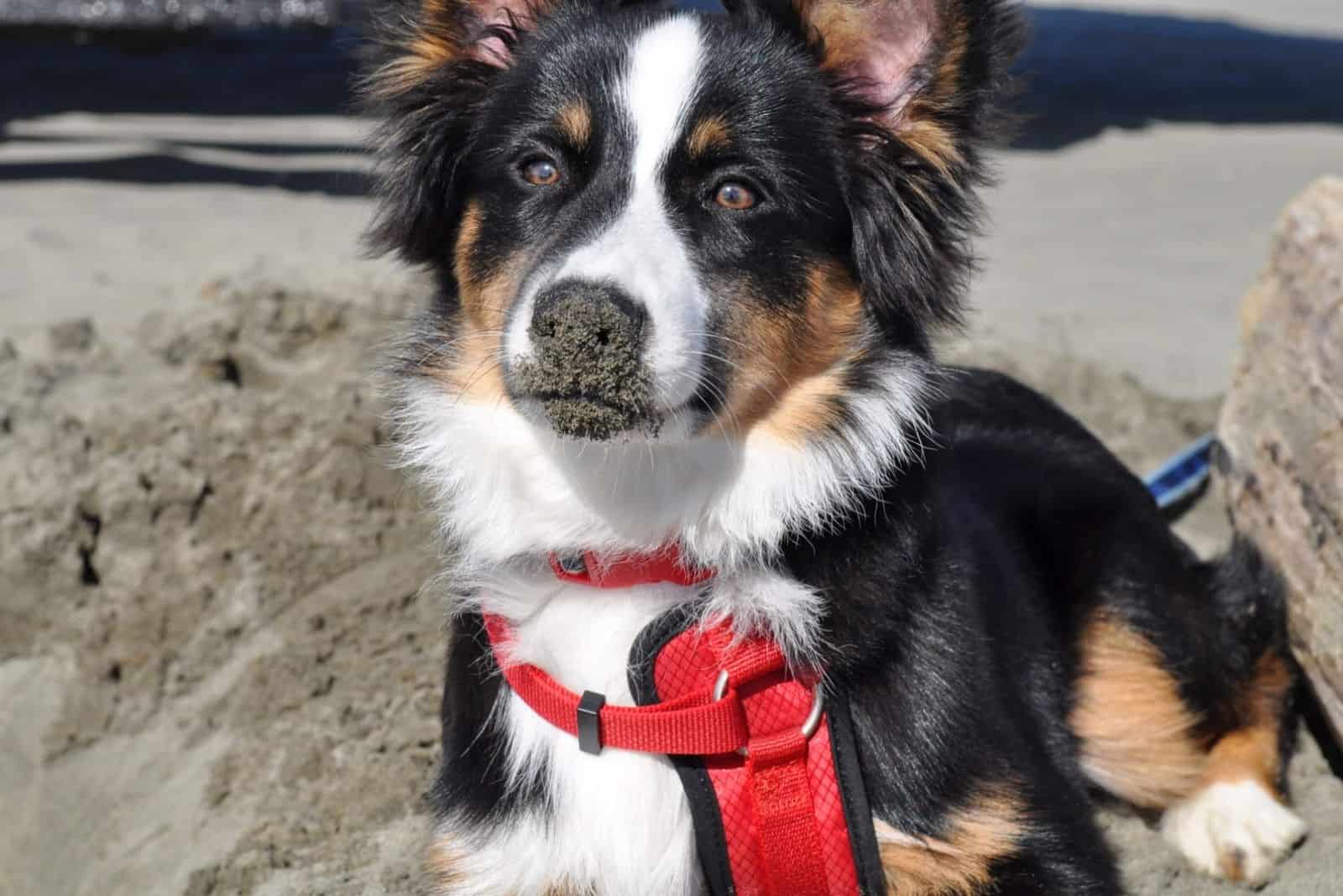
Affectionate, adorable, and intelligent; these three words sum up the Toy Aussie perfectly.
Although they’re small, they’re not as fragile as some breeds, so they’ll be up for some ‘roughhousing’ when it comes to playtime. In fact, they’ll be in their element if young kids are around, seeing them as their siblings. Although they are energetic, they are also pretty easygoing, meaning that you shouldn’t have to worry about things getting out of hand.
Some herding dogs have an instinct for nipping, but this doesn’t seem to be a problem with the Toy Aussie. They might get carried away at times and bump small children, but once they are trained, it shouldn’t be a problem. These dogs are attentive and love to learn, even taking commands from the kids they play with.
They can be a bit needy and clingy, and they’re perhaps better suited in a family setting where it’s less likely that they’ll be alone. They do not do well when left on their own, and they will hate being tethered in the yard.
Separation anxiety can be an issue for these dogs, so be sure to make allowances for when you can’t be there. Make a list of contacts for emergencies, and always arrange for someone to drop by to give your pup some attention.
It’s not wise to leave them alone for more than a couple of hours at a time as they can become destructive. Before going out, try to wear them out with a good run or vigorous playtime. Leave them with a selection of chew toys and puzzle toys, including something like a KONG filled with treats.
Are Toy Aussies Good Pets?
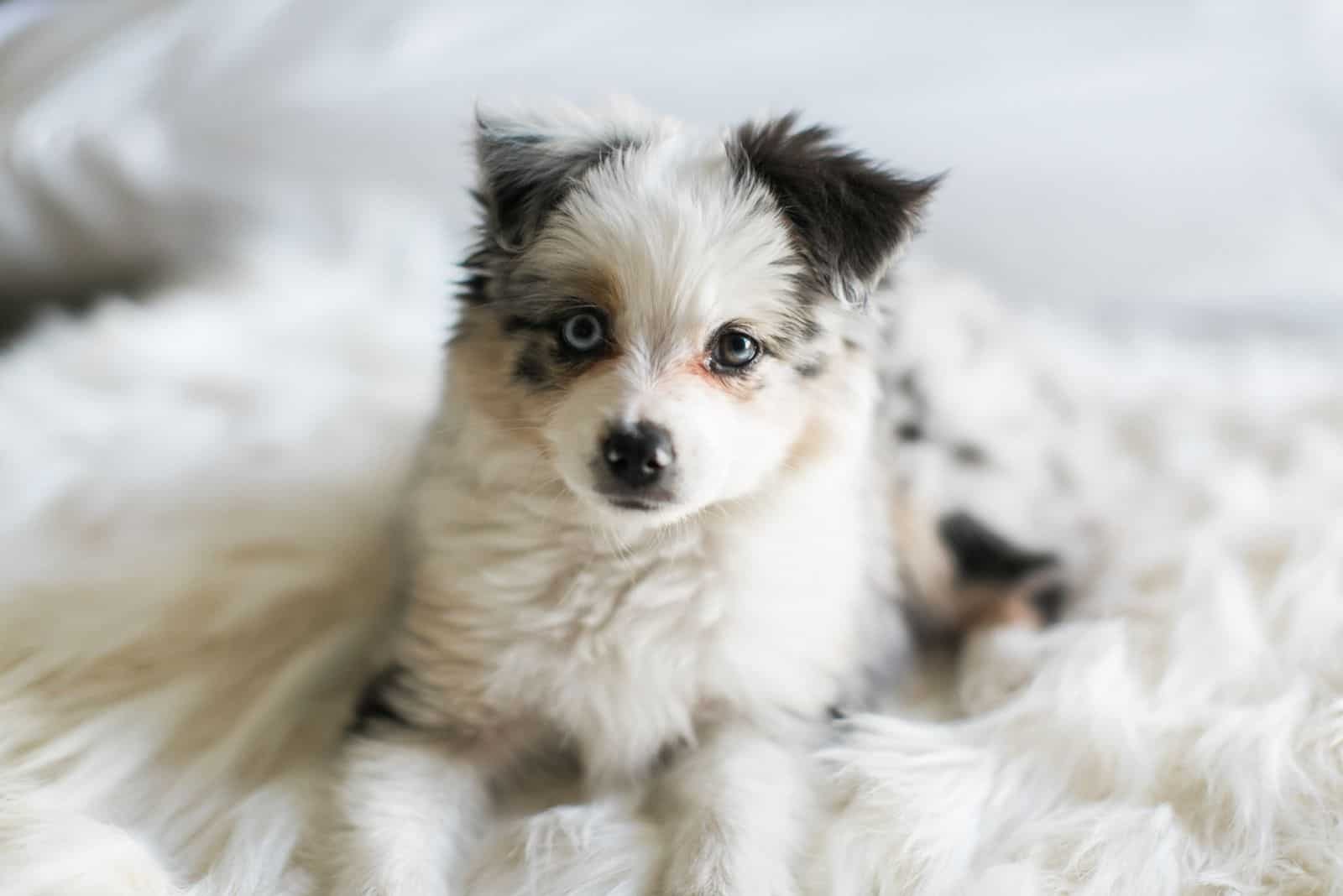
Yes, they make excellent family dogs!
Affectionately known as velcro dogs, they are incredibly loyal. Toy Aussies are especially good around kids and love to join in the fun and games. They are courageous, affectionate, playful, and very intelligent.
Although they are regarded as companion dogs, don’t think that they will be happy to lounge around the home and sleep all day. These dogs are as active and energetic as both the mini and standard versions, requiring at least a couple of hours of daily exercise. They are highly trainable and eager to learn, so they’ll really love being taught new tricks.
Training is essential as these dogs are very smart. They need direction and order, or they will think for themselves and do as they please!
Grooming shouldn’t be too much hassle, although it is best to brush them every day to get rid of any tangles or matting in their fur.
Do Australian Shepherds Have A Tail?
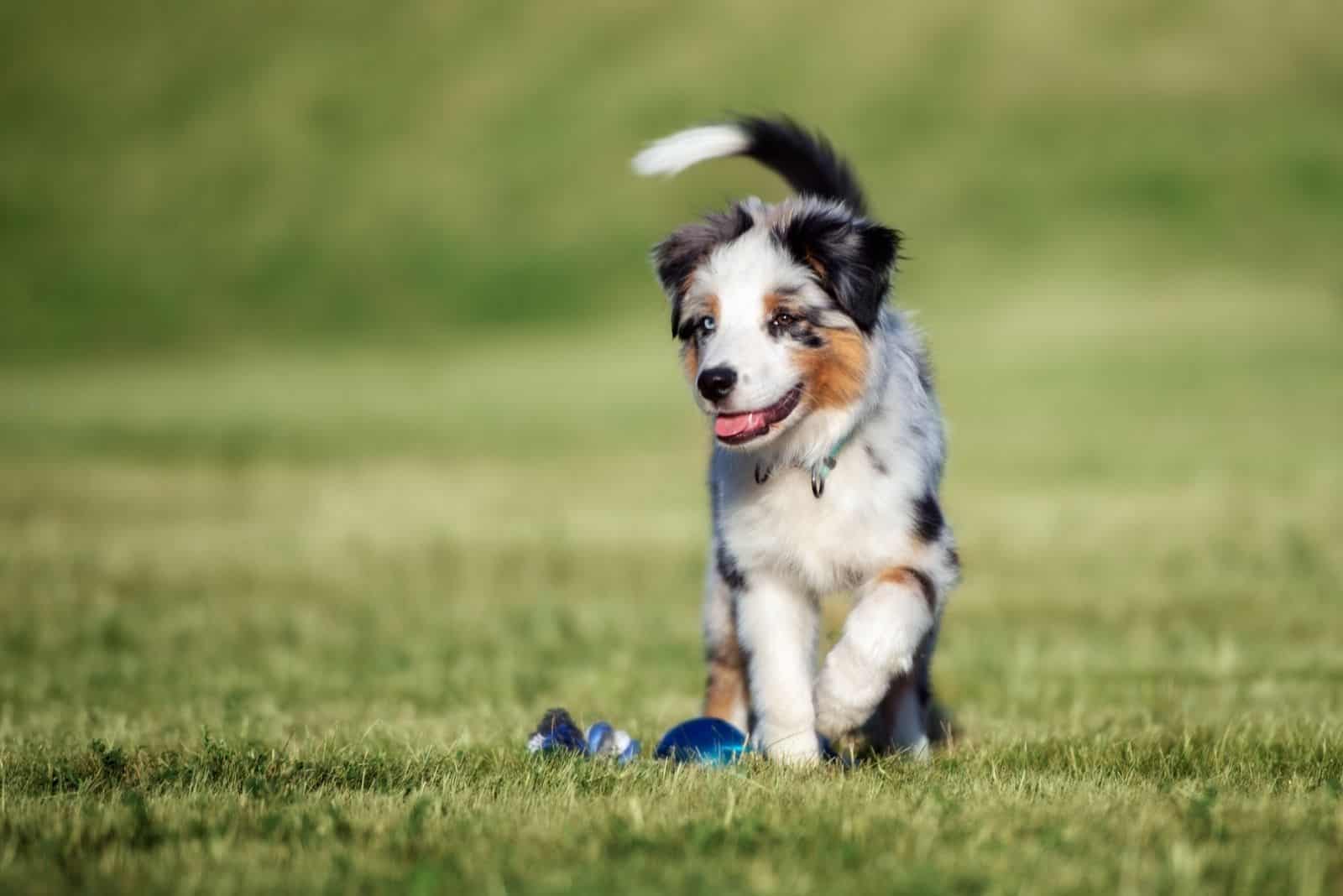
Yes, Aussie Shepherds are born with a tail. However, some will naturally have a bobtail that is short and stubby.
If you’ve seen Aussie Shepherds without a tail, then these have been docked. Docking is where a tail is surgically removed or has a band wrapped tightly around it until it falls off.
This practice was common for many working dogs in the past as it was thought that the tail would be a hindrance and a hazard. These days, docking is done mostly to keep within breed standards set by kennel clubs.
You can enter your dog into shows if it has a tail, but don’t be surprised if it doesn’t win as your dog will be penalized for having a tail!
Docking is now illegal or restricted in most countries around the world, and for good reason.
Besides being comfortable for the pup involved, the tail is a dog’s natural means of communication. Without it, misunderstandings can occur, leading to frustration and aggression. Also, dogs use their tail for balance and as a rudder when swimming.
In addition to all this, docking increases the risk of certain types of cancer in the stub of the tail.
Essentially, tail docking is a purely cosmetic practice that is rightly being phased out. Surprisingly, the USA is lagging behind in this as docking is still legal, though regulated in most states.
A dog’s tail is as natural as its nose, and you wouldn’t snip that off, would you?
Toy Australian Shepherd Price

The average Toy Australian Shepherd puppy costs between $650 and $850, although you can find them for as little as $450 and as much as $1,800, maybe more.
It pays to shop around, but the main thing is to check out the breeder carefully as they are by no means the same, but we’ll come to that later!
Prices tend to differ between locations, and the reputation of the breeder will have a bearing on the price you pay.
Also, you should expect to pay more for a female as they have breeding potential, which makes them more valuable.
Some breeders will charge extra if the pups have been registered. It’s important to note that although the AKC does allow Toy Aussies to be registered, it won’t specify them as ‘toys’. Also, registration is no guarantee that you have a healthy pup! Anyone can register a dog.
Alternatively, you could try a local shelter or a rescue center to see if they have one of these beauties. You’ll pay a fraction of the price and provide a much-needed home for one of these poor pooches, so it’s a win-win situation.
Toy Australian Shepherd Breeder

As we mentioned above, not all dog breeders are reputable or responsible.
You can usually tell them apart as the prime motivator for the bad ones is money. Nothing matters to them except making a fast buck, and they’ll cut corners to achieve this. This includes expenditure on food and accommodation, as well as on healthcare and screening.
The end result is unhealthy pups that have inherited health problems. The thing is, most of these won’t be apparent until the pup is around six months of age; long after you’ve parted with your cash. These breeders won’t offer you a health guarantee either, so you’ll be left with a poor pup and a hefty vet bill.
Avoid any place that looks like a puppy mill. Avoid pet stores and private sellers online. Also, avoid backyard breeders. The vast majority of these are in it purely for profit.
Good breeders stand out by a mile. They’ll welcome you to the kennel and show you around. They’ll discuss their breeding program and introduce you to the pup’s parents. And, they’ll ask you some questions to see how suitable you are to have one of their precious pups.
They will also keep the pups until they are between 8 and 12 weeks old as this allows for a natural separation from the mother dog after she has weaned them. They’ll probably be vaccinated and at least partially potty trained. They may also have started socialization, which is essential in helping them to be less wary of strangers and other dogs later in life.
Check out some Australian Shepherd owner’s forums online to see if you can find any recommendations or warnings! Also, the Humane Society updates its list on its website of the very worst breeders each year, and the AKC has a list of approved breeders to help you out.
Do Toy Australian Shepherds Shed A Lot?
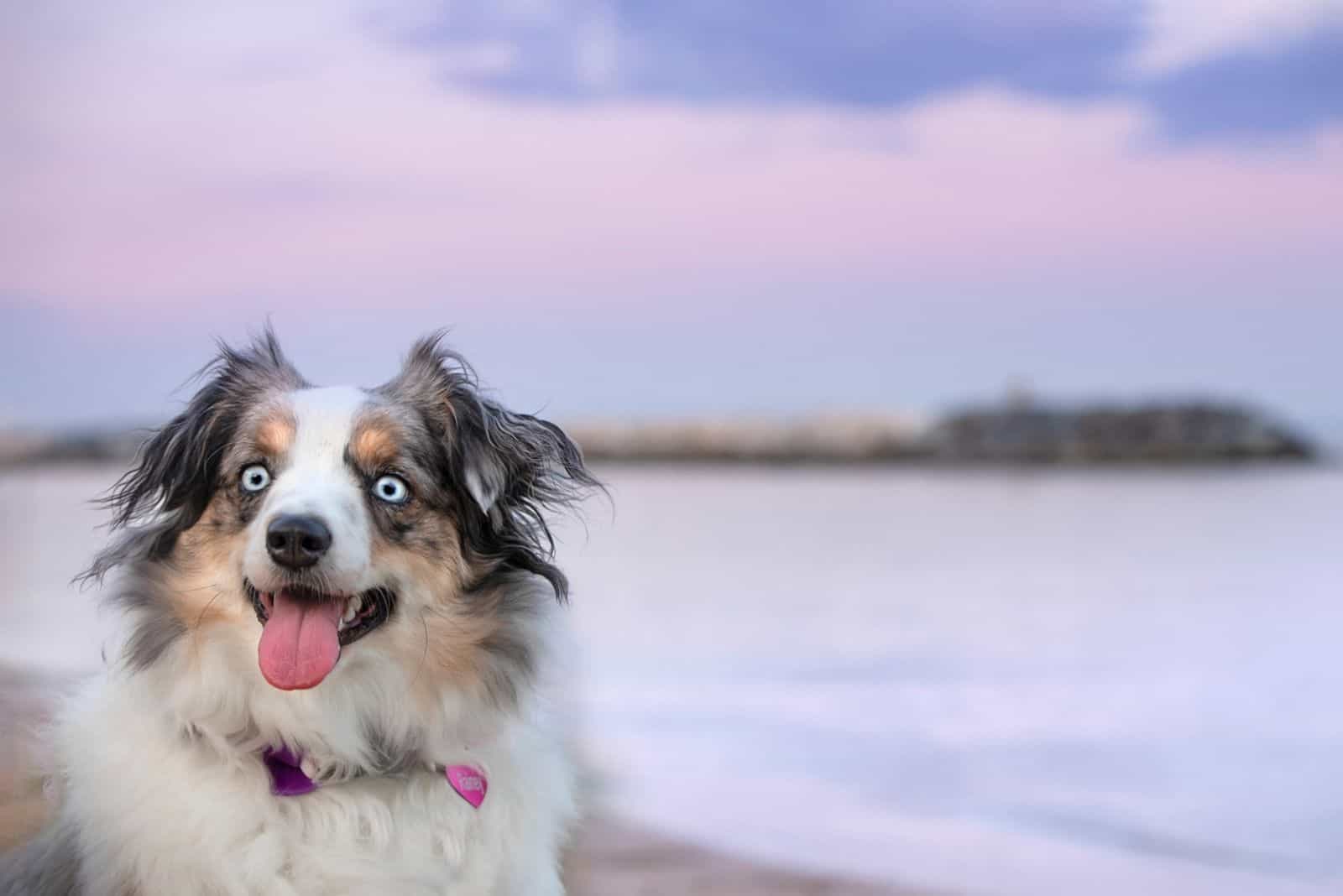
They are classed as average shedders, even though they have a medium-length coat. This means that they shed a fair amount all year round, but not excessively. They’ll also shed more in spring and fall as they have a double coat that blows twice a year.
The best way to keep this in check is through regular brushing, which ideally should be done every day by using a stiff bristle brush or a pin brush. Matting and tangles are not only painful, but they can also cause infections as dirt and bacteria can become trapped.
Are Toy Australian Shepherds Hypoallergenic?
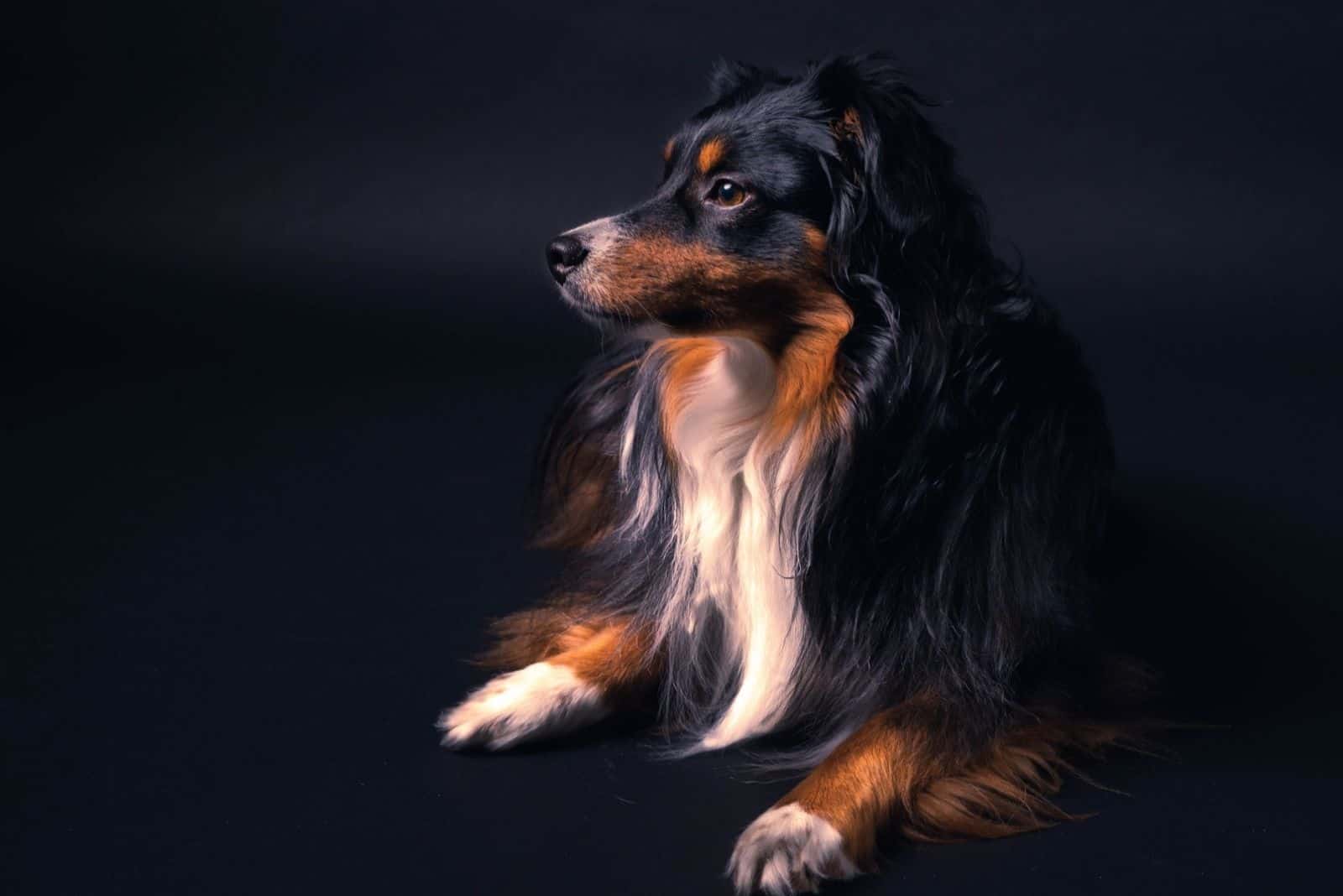
Sadly, they’re not regarded as hypoallergenic, so they’re perhaps not the best choice for dog owners with allergies.
But, let’s examine the word hypoallergenic for a moment as people still misunderstand it or use it incorrectly – even kennel club websites! It has also been used as a marketing gimmick to sell dogs to unsuspecting dog lovers.
You’ll see statements like, there’s no such thing as a 100% hypoallergenic dog. You will also see websites claiming that the Poodle is allergy-free because it is hypoallergenic.
Both are nonsense.
The word hypoallergenic basically means that something is less likely to provoke an allergic reaction. So, you can’t quantify it by using a percentage, and you can never have an allergy-free dog.
All dogs produce allergens. These are in the form of proteins usually found in the dander (dry skin flakes), saliva, and urine to a lesser extent. Many dog breeds suffer from allergies themselves, resulting in atopy (dry, itchy skin), which makes them produce more dander.
Some dogs clean themselves more than others, so they deposit more saliva on their fur. And, dogs that shed more will leave dead hair around your home that is covered in these proteins.
Dogs that don’t lick themselves a lot don’t produce as much dander (because they have healthy, moisturized skin), and dogs that don’t shed as much may conceivably be called hypoallergenic.
However, some people may still have an allergic reaction. Also, some allergy sufferers are okay with certain breeds, but not with others! It’s frustrating, but not much can be done until more research is undertaken to help us out.
It could very well be that if you have a mild allergy, then you might be fine with the Toy Australian Shepherd. One possible way to find out is to spend some time with one to see if there is a reaction, although this isn’t a very scientific approach.
Another option for an owner with allergies would be to look for a Poodle crossbreed, such as a blue merle Aussiedoodle.
Toy Australian Shepherd Lifespan
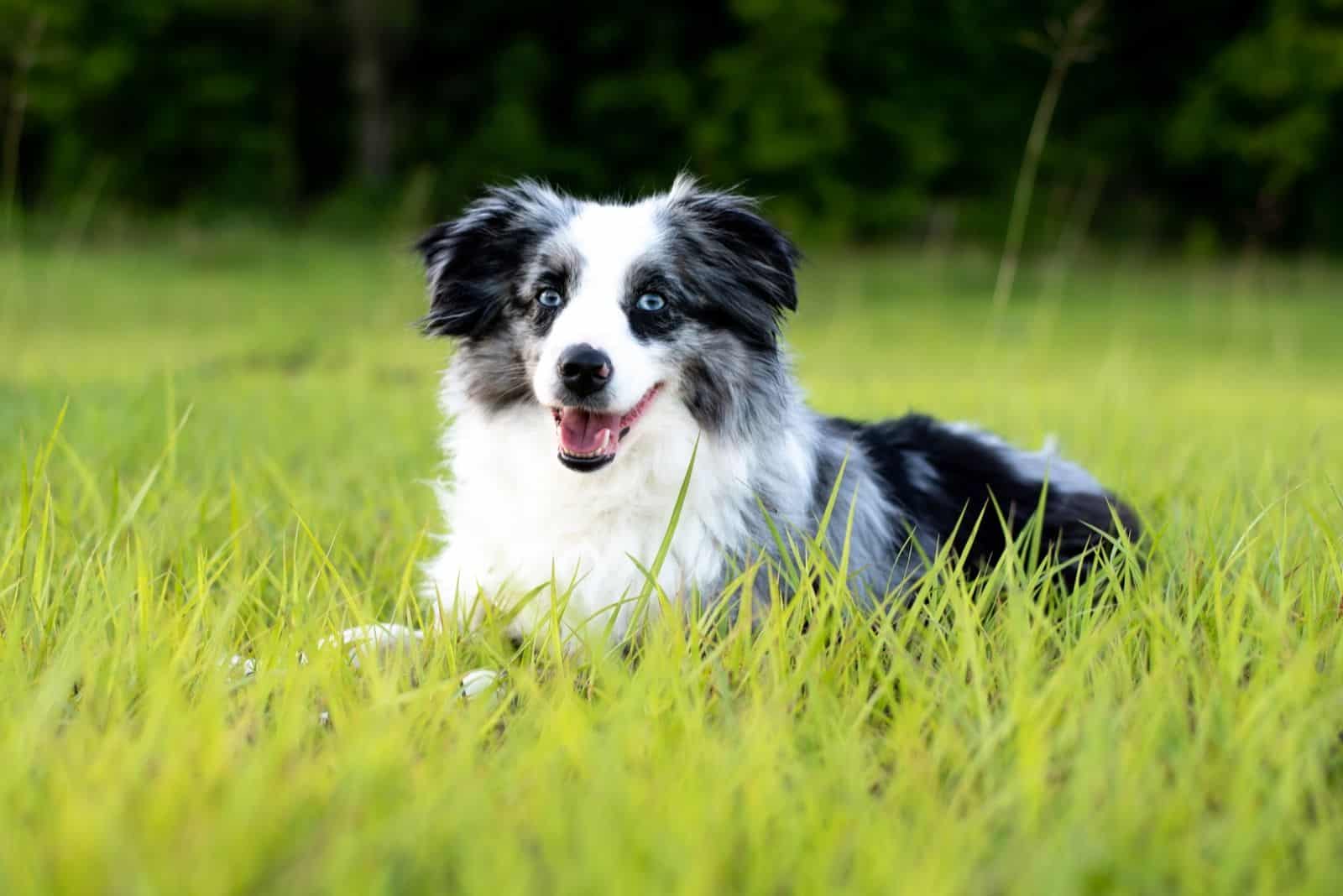
The lifespan of a Toy Australian Shepherd is between 12 and 13 years, which is slightly lower than the average for small dogs.
It is also a little lower than the expected lifespan of the Standard Aussie Shepherd, which is 12 to 15 years. This is unusual as smaller dogs generally have a longer life expectancy than big dogs.
Although the reasons for this aren’t clear, there is a chance that it has something to do with the miniaturization process. Some breeders use unethical methods to produce toy or teacup puppies, such as breeding the mother at the very beginning or end of her heat cycle so that the pups are premature.
It is common for these small breeds to have severe health problems, such as organ failure and fragile bones.
This highlights the importance of choosing a good breeder!
Toy Aussie Health Problems
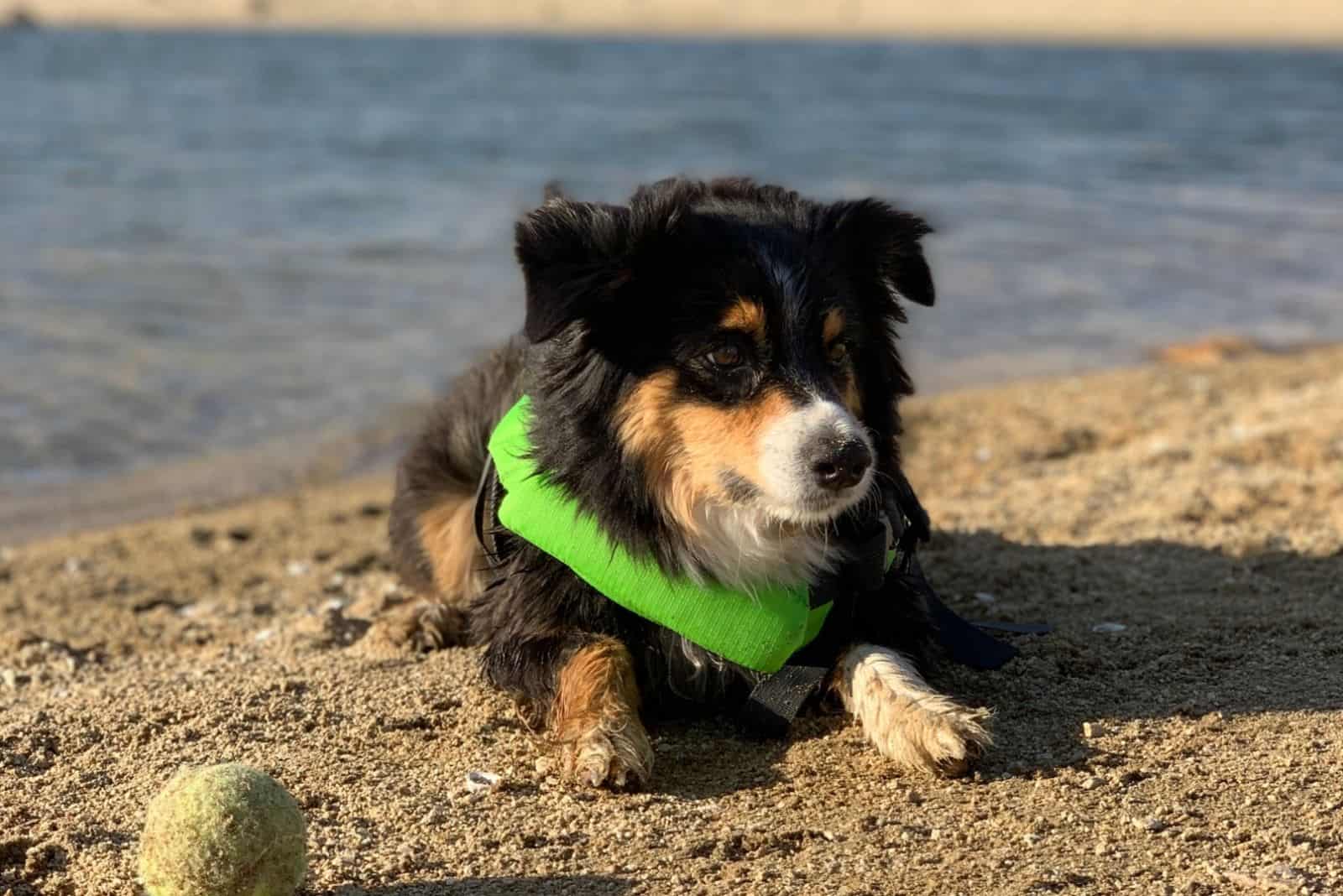
Toy Australian Shepherds are pretty healthy dogs, although they do suffer from a few common ailments:
Just like some other shepherd breeds, the toy Australian Shepherd can be prone to multi-drug sensitivity because of a mutated mdr1 gene. This affects the blood/brain barrier, causing the dog to be sensitive to a range of common drugs; thus, making them toxic.
These can cause severe adverse reactions that can even be fatal. It is believed that up to 50% of all Aussie Shepherds inherit this mutated gene, which is why breeders are encouraged to screen their dogs for the condition. When you visit the breeder, be sure to check whether they do this.
Hip dysplasia is a painful condition that can affect any breed of dog. The problem arises when the hip joint doesn’t form properly as the pup develops, resulting in the bones grinding together. This causes inflammation, and often leads to osteoarthritis, especially when the dog is old.
Hip dysplasia can affect one or both hip joints, and it usually requires surgery in severe cases, involving total hip replacement. Surgery has an excellent success rate, and the dog will be able to move around freely and without pain. The only pain after this will be in your bank account as it can cost between $800 and $7,000 per hip!
A similar condition can affect the dog’s front legs, too, known as elbow dysplasia. This also requires surgery in severe cases, costing around $3,000 or $4,000.
Toy Aussies are prone to several eye problems, including cataracts, corneal dystrophy, and distichiasis. The first of these can be treated fairly easily, and the second can often be left without treatment.
Distichiasis can be problematic as it is caused by extra eyelashes that rub against the eyeball. This is treated by using lubrication or plucking the extra eyelashes.
Staying on the subject of eye problems, Toy Aussies can also be prone to Collie Eye Anomaly; an inherited condition that can cause abnormally small or sunken eyeballs. It can be mild enough for you to not even notice, or severe enough to cause blindness. Either way, there is no cure, so your breeder should test for this condition.
As well as Collie Eye, they can also get Collie Nose! One of the medical terms for this is solar nasal dermatitis as it is an abnormal reaction to sunlight that damages the skin on unpigmented areas of their nose. Treatment usually involves a course of strong steroids.
Toy Australian Shepherds can also suffer from an underactive thyroid, known as hypothyroidism. Dogs with this condition don’t produce enough of the hormones needed for their metabolism to run smoothly. They will become lethargic and will prefer to sleep rather than exercise. They may put on weight, even though they lose their appetite.
You might also notice changes in their coat as it becomes patchy and dull, with areas of dry, sore skin.
Sadly, there is no cure for this at present, and dogs must be treated for life by using hormone replacement therapy.
Finally, these small dogs are prone to epilepsy. Seizures in dogs are caused by a variety of reasons, including trauma and poisoning. However, in many cases, the real cause is unknown.
Seizures don’t usually start until the dog is between 1 and 5 years old. If the cause is known, then the dog will be treated accordingly, but if it is diagnosed as idiopathic epilepsy, then they will need medication to control the seizures throughout their life.
These are the more common ailments you might see in a Toy Aussie, but don’t be too alarmed! This breed is regarded as one of the healthiest around, and there’s no guarantee that your pup will have any of these conditions.
You can increase your chances of your pup being healthy simply by choosing your breeder wisely as they will have health screening programs in place.
Bringing It All Together
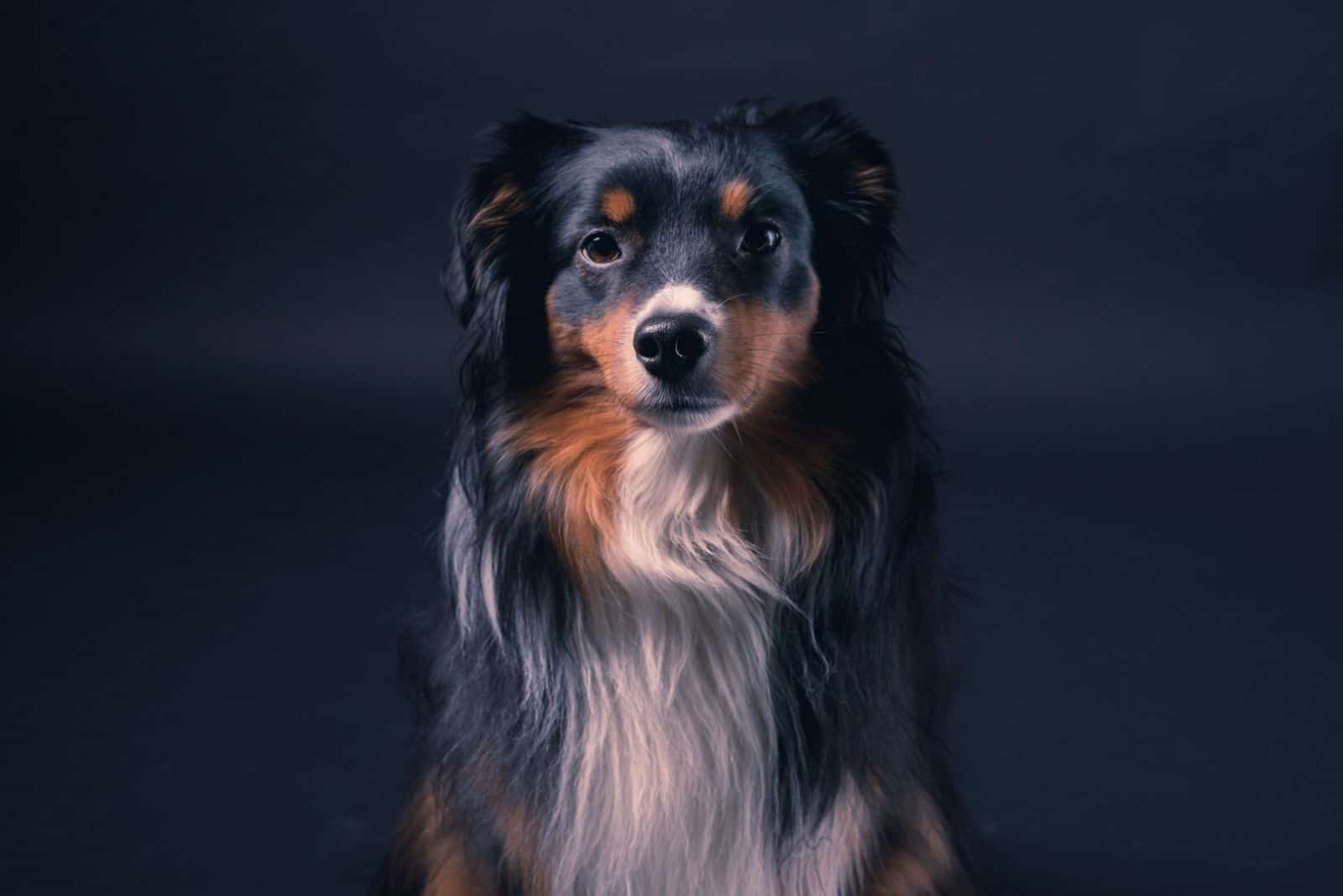
So, now we know that the Toy ‘Aussie’ Shepherd isn’t actually from Australia, just like the larger standard version.
We also know that the medium-sized version, the Miniature Australian Shepherd, is sometimes called the Miniature American Shepherd simply because the AKC doesn’t want any mention of its connections with the Standard Australian Shepherd!
Although it is registered as a separate breed, it really isn’t. They are actually one and the same, whatever you might read elsewhere.
Still, that has no bearing on our beautiful Toy Aussie. Let’s see what we’ve learned about these rather than dwell on the complicated world of kennel club rules.
Toy Aussies make great family pets, but you have to play your part.
They’ll stick to you like glue, almost literally, because they just love to be with you all the time! Playtime in the yard or garden will be frantic and fun, especially if kids are involved. You’ll need to keep an eye on things as the herding instinct can show itself as the dog bumps into the kids as if they were livestock that need to be kept in check.
Socialization at an early age will help to counter any wariness towards strangers and other dogs, and obedience training will help with any unwanted behavior. It should also curb his prey drive, or at least make him more likely to listen to you when you give the command to stop.
These little dogs will need plenty of exercise; at least two hours each day. You can split this down into several sessions to make things easier and to keep your dog happy.
Long walks in interesting places help stimulate his mind, but you’ll need to find other ways such as puzzle toys, agility training, obstacle courses, herding contests, etc. to make sure that he gets the mental stimulation that he needs.
He’ll need brushing once a day, but his small size makes this an easy job. It’s important as matting can be a problem around the legs and tail in particular.
And, speaking of that tail, he may only have a stub around three or four inches long – known as a bobtail. He may well have a naturally long tail. What he really shouldn’t have is a docked tail as it isn’t necessary, especially as there are no breed standards to dictate this for the Toy Aussie!
By getting your pup from a reputable breeder, there’s a very good chance that he’ll be fit and healthy. You need to build on this by ensuring that he only has high-quality dog food. Avoid giving him too many unhealthy treats, and use a handful of kibble as a reward when training.
You’ll be tempted to give him things like hot dogs, bacon, cheese, nachos, chips – basically anything that you’re eating at the time. He’ll watch you expectantly, waiting for you to cave in and let him share your delicious food.
This is a bad idea as most human food is highly processed and contains far too much salt, sugar, and fat. Fatty foods can damage your pup’s health, making them obese and possibly leading to pancreatitis.
An odd treat once in a while won’t hurt, but it shouldn’t become a habit! Always avoid things with garlic, onions, or hot chilis in it as these can upset your dog’s stomach.
As for the rest of his care regime, you’ll need to check his ears for gunk, and clean them if necessary to avoid infections from spreading. You’ll also need to check his eyes for any sign of the pesky health problems mentioned above. Finally, you’ll need to brush his teeth (every day, if possible) and clip his toenails.
This last job can be tricky, and you don’t want to hurt your furry friend. To help you out, buy a set of specialist clippers that don’t allow you to cut down too far, or alternatively, you could use a professional groomer.
On a serious note, small dogs are incredibly popular right now, and it’s a trend that looks set to continue. As we’ve seen, miniaturizing dog breeds is a specialized procedure requiring patience and expertise. Sadly, this process is abused to produce small dogs – teacup dogs in particular – to meet the demand.
It is absolutely essential that you only use respected, reputable breeders who have the knowledge and experience to produce toy dogs safely, with the welfare of the parents and the pups in mind.
Finally, Australian Shepherds of any size deserve to be treated with love. kindness, and respect, even though they’ve never been within a thousand miles of the Land Down Under!















